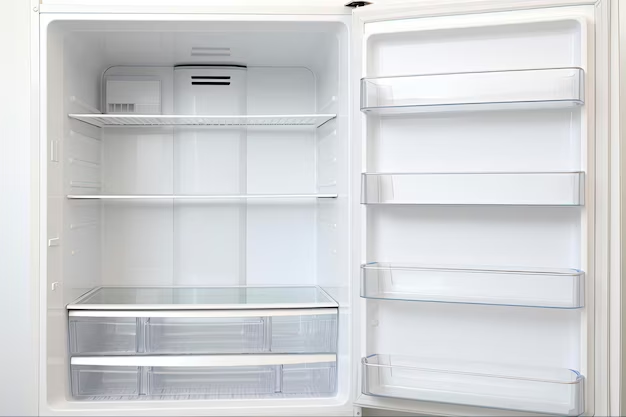Discovering the Ideal Refrigerator Temperature: A Comprehensive Guide
Imagine opening your refrigerator and feeling the perfect chill that ensures your food stays fresh longer. But what is that ideal temperature? Understanding how cold a normal refrigerator should be is essential not only for preserving taste and quality but also for minimizing food waste. Join us as we explore everything you need to know about setting and maintaining the best temperature for your refrigerator.
🌡️ Why Temperature Settings Matter
Food Safety and Freshness
The primary reason for maintaining the right temperature in a refrigerator is food safety. Perishable items like dairy, meat, and leftovers are prone to bacteria growth if not stored properly.
- Ideal Range: Most experts agree that the optimal temperature for a refrigerator is between 35°F and 38°F (1.6°C to 3.3°C). This range is cold enough to slow bacterial growth yet warm enough to prevent freezing your food.
Energy Efficiency
An overlooked side of setting the correct refrigerator temperature is energy consumption. Refrigerators run more efficiently when set within the ideal range, potentially saving you money on electricity bills.
- Efficiency Tip: Keeping the temperature set to its optimal range reduces overcooling, which can increase energy use and wear on the appliance.
How to Set Your Refrigerator Temperature
Checking Current Temperature
To ensure your fridge is at the right temperature, use a reliable refrigerator thermometer. Many built-in thermostats aren't as precise as they seem.
Steps to Check:
- Place the thermometer in the center of your refrigerator, away from the walls.
- Wait 5-8 hours before taking a reading to ensure accuracy.
- Adjust settings if necessary, and allow a few hours for the temperature to stabilize.
Adjusting Your Fridge's Thermostat
Once you know the current temperature, adjust your thermostat as needed. This may involve setting a digital control or turning a dial in more traditional models.
- Tip: Make small adjustments and give the appliance time to respond before rechecking.
Understanding Different Refrigerator Zones
Common Zones and Their Uses
- Upper Shelves: Typically the warmest area, ideal for leftovers, drinks, and ready-to-eat foods.
- Lower Shelves: Often the coldest, perfect for storing raw meats and dairy products.
- Door Compartments: Generally warmer, better suited for condiments and juices than milk or perishable items.
- Crisper Drawers: Designed to maintain a higher humidity, keeping fruits and vegetables fresher.
Specific Needs for Different Foods
- Meats: Store on the lowest shelf to prevent cross-contamination from drips.
- Dairy: Keep on the middle shelves where temperatures are more stable.
- Produce: Use designated crisper drawers, adjusting humidity settings to suit the type of produce.
Maintaining Your Refrigerator for Optimal Temperature
Regular Maintenance Tips
Proper maintenance can prevent fluctuations in temperature and ensure efficient operation.
- Clean the coils: Dirty condenser coils can cause the fridge to work harder, affecting its ability to maintain proper temperatures.
- Inspect door seals: Check for cracks or gaps that let out cold air.
- Organize contents: Avoid overloading, which can restrict airflow and reduce cooling efficiency.
- Check fan operation: Ensure that the fan is functioning correctly to distribute cold air evenly.
Common Issues and Solutions
- Uneven cooling: Caused by blocked vents or malfunctioning fans, often requiring professional repair.
- Frost buildup: Check for issues with the defrost timer or heater.
- Dripping water: Ensure the drainage tube isn't blocked.
🚀 Quick Tips for Refrigerator Temperature Management
Here’s a handy checklist to ensure your refrigerator remains in top-notch condition:
- 🌡️ Set between 35°F and 38°F for optimal food safety and energy efficiency.
- 🔍 Use a thermometer to double-check your fridge’s temperature.
- 🔄 Adjust settings slowly, allowing time for changes to take effect.
- 🧄 Organize wisely: Understand the purpose of different zones.
- 🧽 Keep it clean: Regularly clean coils and check seals.
- 🚪 Limit door opening: Minimize how often you open the fridge to maintain consistent temperatures.
The Impact of Exterior Temperature Variations
How Seasons Affect Refrigerator Performance
While refrigerators are designed to work efficiently in a variety of environmental conditions, extreme temperatures can impact their performance.
- Hot Weather: During summer months, your fridge may work harder to maintain interior temperatures, leading to increased energy consumption.
- Cold Weather: In unheated locations, like garages in winter, models not designed for such conditions may have reduced efficiency.
Seasonal Adjustments
Consider seasonal adjustments to maintain efficiency.
- Change settings cautiously during drastic temperature shifts.
- Monitor more frequently in extreme conditions to prevent spoilage.
Conclusion: Keeping It Cool and Efficient
Ensuring your refrigerator is set at the right temperature is crucial for both the freshness of your food and the efficiency of your appliance. By understanding how to maintain and adjust your refrigerator settings, recognizing the appropriate storage zones, and conducting regular maintenance, you can extend the life of your fridge and save on energy costs. Keep this guide handy to master the art of refrigerator management, ensuring your food stays fresher longer and your appliance runs smoothly. Remember, the ideal temperature range of 35°F to 38°F (1.6°C to 3.3°C) is not just a guideline but a key to both food safety and energy efficiency.
